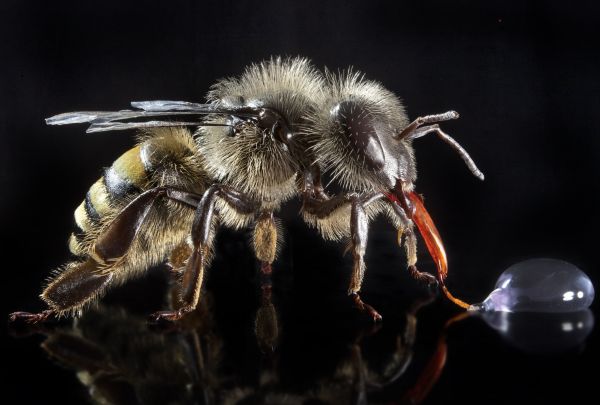Honey bee / Worker - Apis mellifera
Distribution and habitat
The honey bee (Apis mellifera) is about 11- 14 mm long and can be found almost worldwide.
It is probably one of the best-known insects and maybe the most important animal for us humans.
Not the honey production, but its vital role in pollinating our flowering crop plants make the honey bee indispensible for our diet and our ecosystems.
In Europe, 84 % of crop plants are dependent on pollination by bees.
Way of life and characteristic features
Honeybees are social insects and live in colonies of up to 60.000 animals.
There are three castes within a bee hive, a queen, the drones and the workers. Every caste is specialized on various tasks.
A worker bee collects nectar and pollen and is able to produce about 2 teaspoons of honey before it dies of exhaustion after approx. 5 weeks.
A queen lays up to 2000 eggs a day and can become up to 5 years old.




